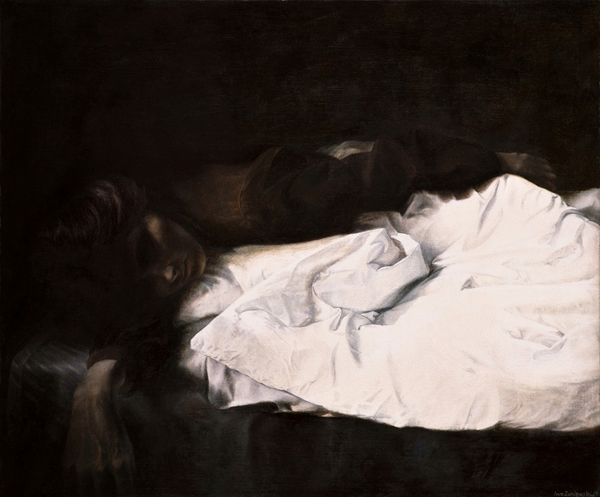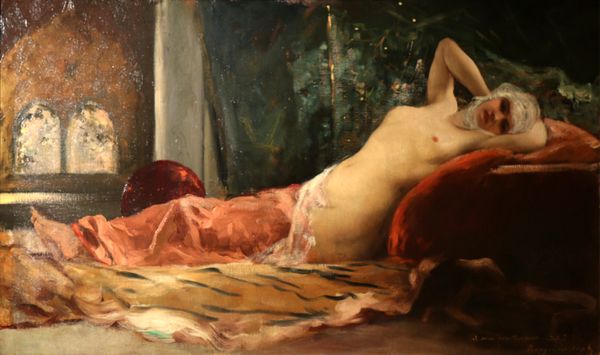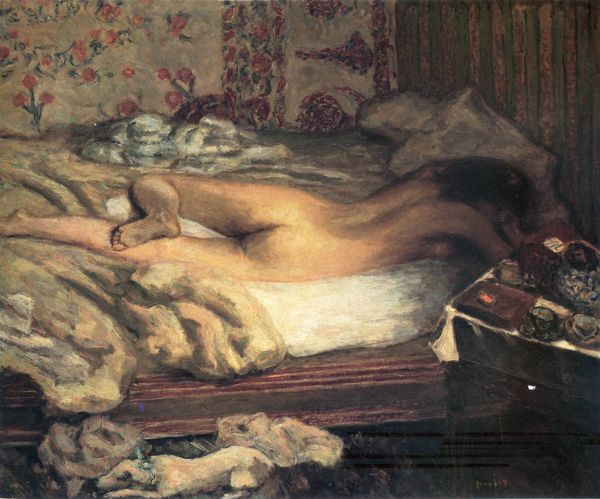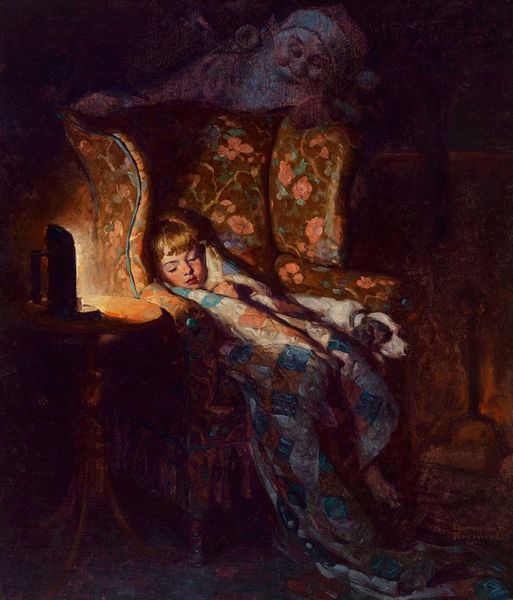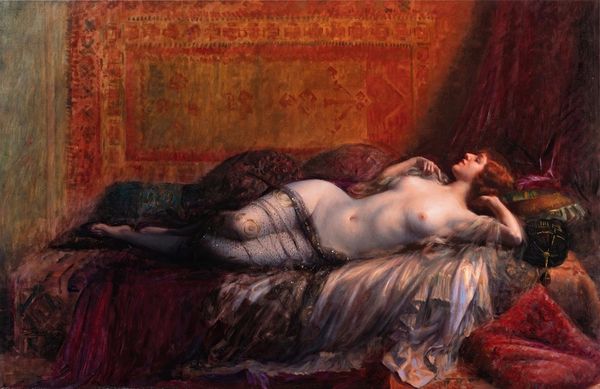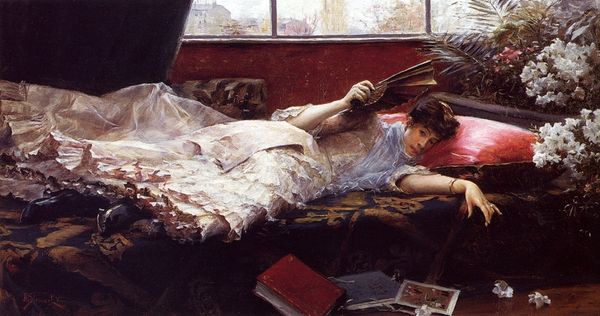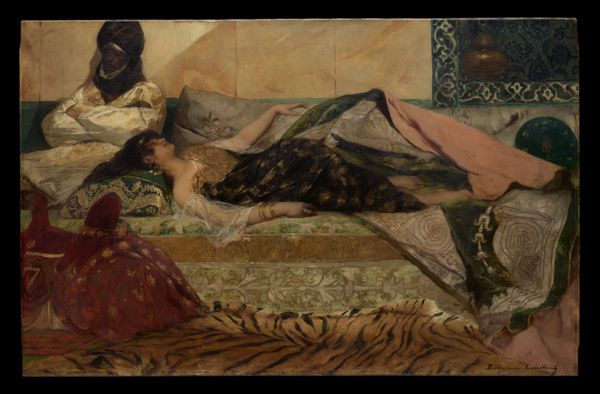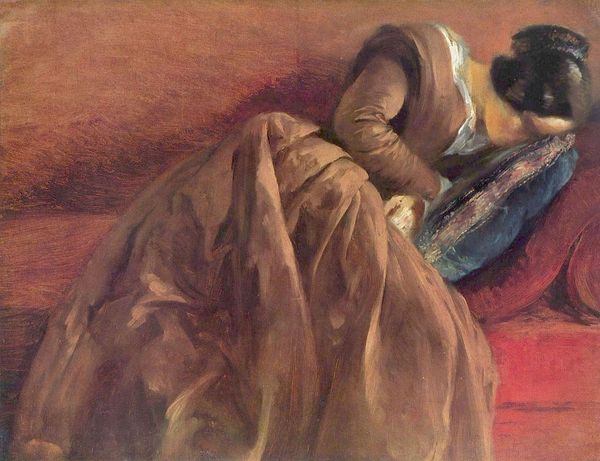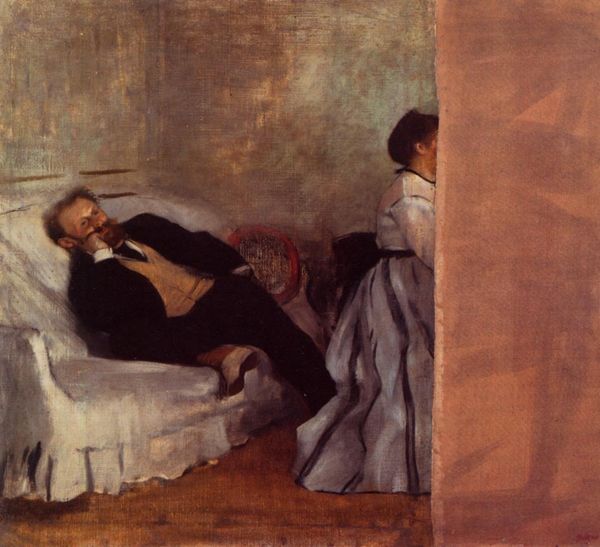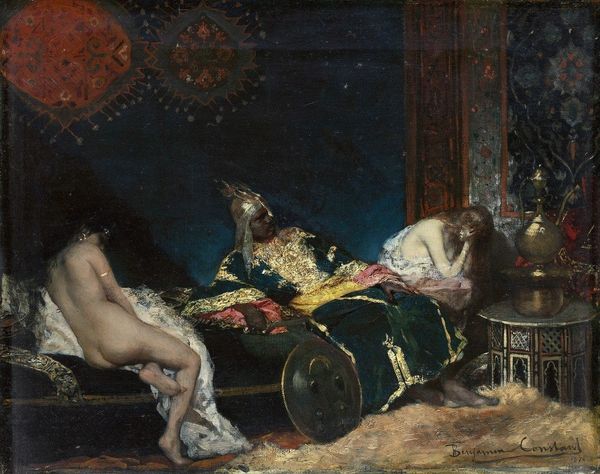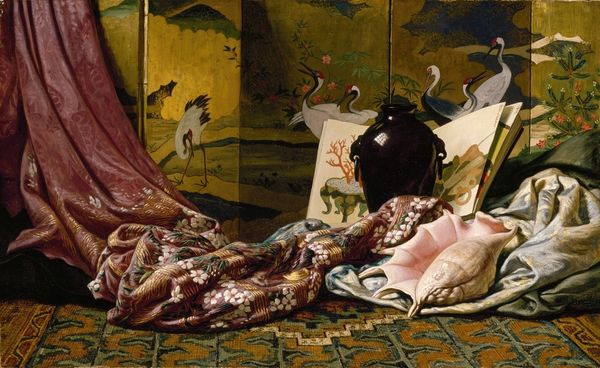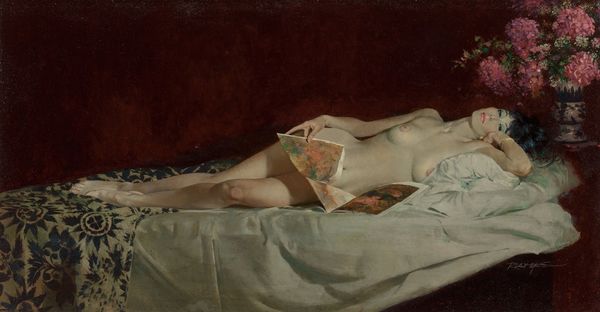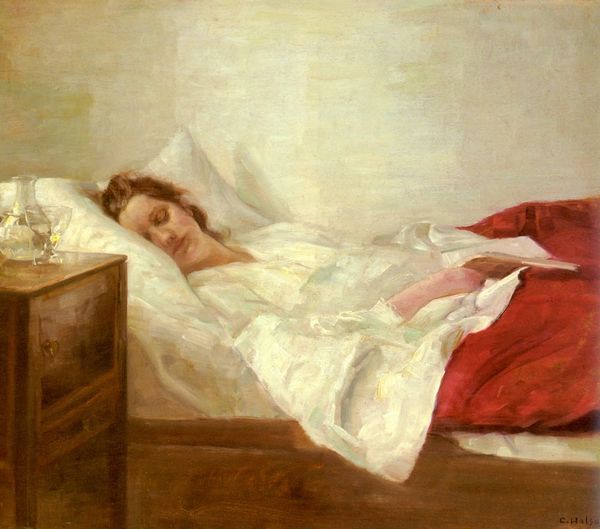
painting, oil-paint
#
portrait
#
painting
#
oil-paint
#
painted
#
oil painting
#
history-painting
#
academic-art
#
nude
#
erotic-art
#
realism
Copyright: Public domain
Curator: My first reaction is just how unnervingly peaceful this is. Editor: You’ve certainly pinpointed its paradoxical effect! We’re looking at “Desdemona,” an oil painting crafted in 1892 by Rodolfo Amoedo. The stillness you perceive sits heavily on the impending tragedy. Curator: Impending? I felt as though the tragedy has passed. There is an acceptance to her posture, as if, finally, there is peace. Does that resonate within the structure of the image? Editor: Very astute. Formally, it’s a fascinating exercise in contrasting textures and colour. The stark white sheets, juxtaposed with the ominous shadows that loom around her, speak volumes about innocence meeting a grim fate. Note the academic precision, the very controlled brushstrokes. It's as though Amoedo is building a perfect tableau of loss. Curator: The colour palette just seems to vibrate! That muted red background…almost like dried blood under stage lighting. I get the need to present "loss", but what else might the work represent beyond a snapshot from Shakespeare? The light falling upon her face almost evokes religious iconography. Editor: An astute point about colour, which enhances narrative. The pre-Raphaelites definitely used that to amplify themes and dramatic ironies, to make paintings "speak" directly to viewers in the language of colour and emotion. Your note about the religious evokes its aesthetic purity which could imply a "martyr". Her death as sacrifice of some kind? Perhaps, Amoedo is painting a reflection on female vulnerability and victimization, the tragic destinies woven into the narratives of women, not just in Shakespeare but in a patriarchal world. Curator: Absolutely. It does raise many contemporary conversations as to why those paintings, specifically the historical portrayals are interesting in today's art context. Editor: Indeed! Thank you for your illuminating perspective. These artworks are still being interpreted in new ways because our culture evolves constantly and we approach things from the vantage point of now, don't we?
Comments
No comments
Be the first to comment and join the conversation on the ultimate creative platform.
